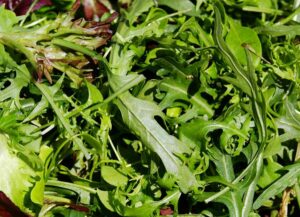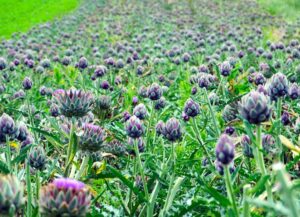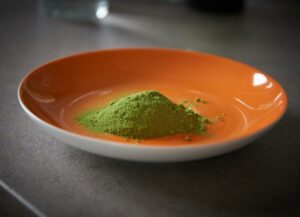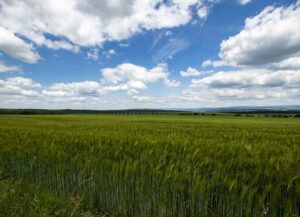Francisco E. Contreras Govea, Ph.D
Conventional forages for lactating cows in the USA are corn silage, alfalfa, grass, and winter cereals. However, in other countries, searching for alternative forage crops to feed dairy cows is a high priority. Moringa oleifera (Lam.), also known as drumstick tree, and horseradish tree is a deciduous tree from tropical and subtropical areas of India.
M. oleifera produce high biomass yield from leaves, which have crude protein values higher than 20%. M. oleifera has been introduced to southern part of China as alternative forage for ruminants. Li et al (2019) conducted a study to assess the effect of replacing 50% of the alfalfa hay (around 2.2 kg DM basis) from a diet formulated for mid-lactation dairy cows with M. oleifera.
Cows were fed the two diets [diet with only alfalfa (21.7% in a DM basis) and diet with alfalfa (10.9% DM) and M. oleifera (10.9% DM)] in a cross over experimental design. In addition, diets included corn silage (24.5% DM) and concentrates (54% DM). The Moringa oleifera diet included Moringa oleifera leaves and peduncles at a ratio of 3:2. Moringa Oleifera nutrient composition is reported in Table 1. In this study, data were collected for DM intake, digestibility, and rumen fermentation.
Table 1. Nutrient composition of Moringa Oleifera
| Nutrient | Leaves | Peduncles |
| Dry Matter | 92.7 | 91.4 |
| Crude Protein (%DM) | 23.1 | 12.0 |
| NDF (%DM) | 42.4 | 69.7 |
| ADF (%DM) | 27.9 | 41.1 |
| Lignin (%DM) | 7.0 | 14.7 |
| Fat (%DM) | 9.0 | 3.4 |
| NFC (%DM) | 15.5 | 8.0 |
| Calcium (% DM) | 1.52 | 0.88 |
| Phosphorous (% DM) | 0.19 | 0.24 |
Dry matter intake and DM digestibility were greater for the M. oleifera diet than only alfalfa diet (Table 2). There was not rumen pH (6.7) difference between M. oleifera and alfalfa diet. In addition, the molar proportion of acetate, propionate, and butyrate was not different among diets (Table 2).
The authors concluded that replacing 50% of alfalfa from a diet of lactating dairy cow with M. oleifera there was an improvement in intake, digestibility and rumen fermentation. Therefore, they recommended that M. oleifera cbe used commercially for feeding dairy cows.
Table 2. Dry matter intake and digestibility, and molar proportion of volatile fatty acids of lactating cows
| Item | 50% M. oleifera diet | 100% Alfalfa diet |
| Intake (kg DM/day) | 20.3 | 18.7 |
| DM digestibility (%) | 63.0 | 59.7 |
| Molar proportion (mmol/100 mmol) | ||
| Acetate | 60.3 | 61.5 |
| Propionate | 21.1 | 20.4 |
| Butyrate | 15.3 | 14.6 |
Even though, adding M. oleifera as part of the diet could bring potential benefits in intake and rumen fermentation, this study does not provide information about milk yield and milk composition. Additional information is necessary to support these recommendations.
Reference
Li Y., Zhang GN., Xu HJ., Zhou S., Dou XJ., Lin C., Zhang XY., Zhao HB., and Zhang YG. 2019. Effects of replacing alfalfa hay with Moringa oleifera leaves and peduncles on intake, digestibility, and rumen fermentation in dairy cows. Livestock Science. 220:211-216.
© 2019 Dairy Knowledge Center, LLC. All Rights Reserved.









